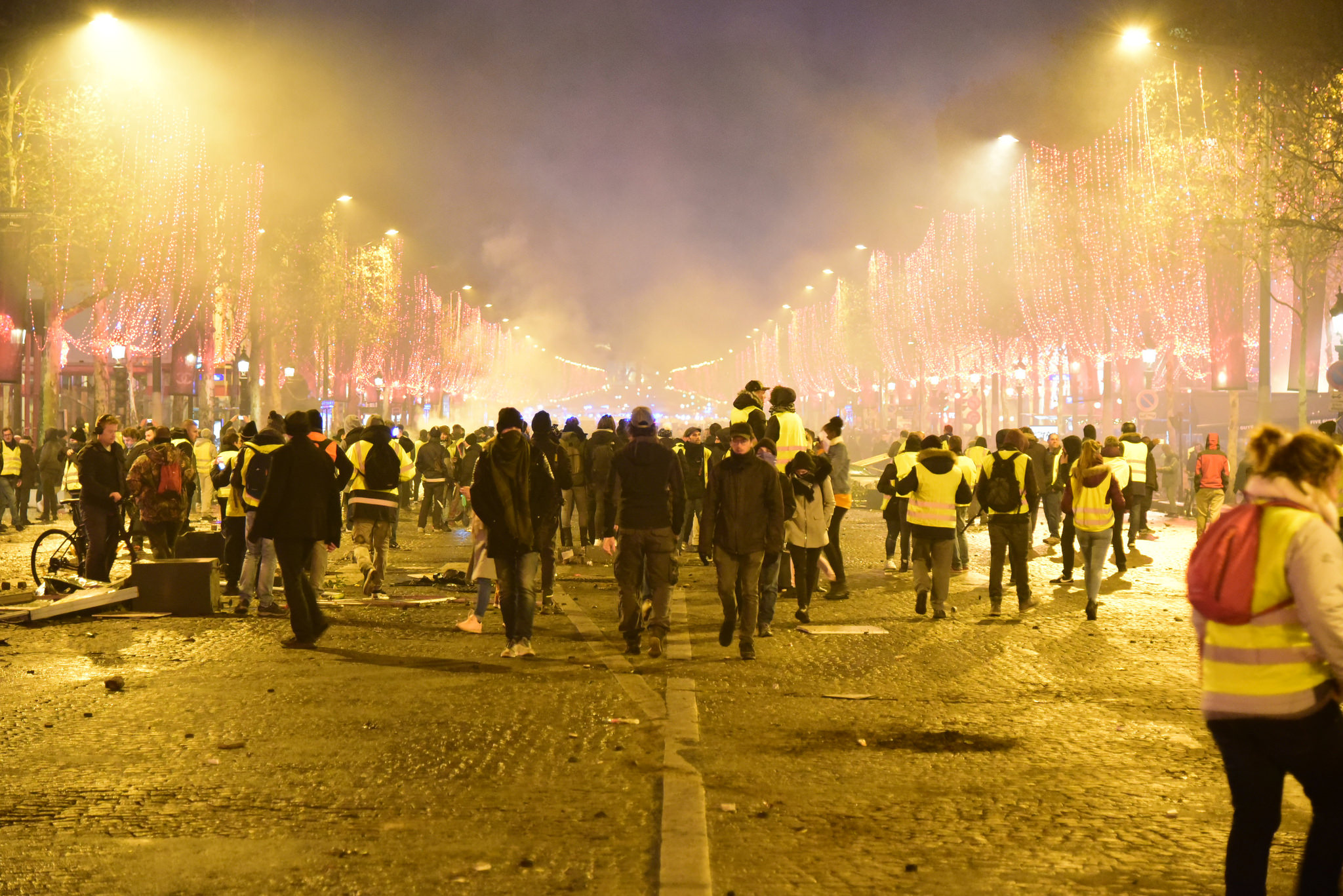By Dawn Brancati and Adrián Lucardi.
The Egyptian government banned the sale of yellow vests this week in an effort to forestall anti-governments protests in France from spreading to Egypt. Egypt’s response is not unprecedented. After the 2011 protests in Tunisia, the Chinese government banned jasmine flowers and blocked the Chinese characters for jasmine flowers in text messages. After the Orange Revolution in the Ukraine, the Azerbaijani government prohibited the sale of orange-colored clothing in the country, leading t-shirts, shirts, shoes, etc. to disappear from store shelves.
Should Egypt and other states worry about the Yellow Vest protests spreading to their countries? Our research (JCR, forthcoming) on the diffusion of democracy protests suggests that they should not.
Using daily data between 1989 and 2011, we find that the occurrence of a democracy protest in one country does not significantly increase the likelihood of protests in other countries. This is true not just of democracy protests, but others forms of anti-government protests as well. This is easy to see when you look visually at where protests occurred (and did not occur) in this period. (See Graph)
Why don’t democracy protests diffuse? Democracy protests arise from domestic processes, which are generally unaffected by the occurrence of democracy protests in other countries. Democracy protests generally arise when strong public sentiment against governments (derived from political, social, or economic grievances) is triggered by internal events, such as elections and economic crises. This, in turn, facilitates collective action against governments by making individuals cognizant of their shared opposition to their regimes.
In general, the occurrence of democracy protests in neighboring countries does not raise this level of discontent, nor does it facilitate collective action on behalf of it. In fact, most democracy protests—small, short-lived, repressed, and unsuccessful—are poor models for protests in other countries. Certainly, this does not prevent some governments from believing that they do diffuse and hence taking countermeasures, such as the banning the sale of yellow vests. However, these measures do not serve as much of a deterrent to protest diffusion, and usually the governments most capable of undertaking these measures are those least likely to experience protests in the first place.
The Yellow Vest protests in France are one such example. Protests in France, a Western democracy known for its protest culture, where freedom of speech is not only protected, but extolled, and where governments makes concessions to protesters, say little about the potential for protests to succeed in Egypt, an authoritarian state known for its increasing repression. Indeed, it is telling that the Egyptian government is less worried about the fact that yellow vests may spark protests there, than about people wearing them when protesting during the 8th anniversary of the Egyptian revolution in January to attract wider attention—a domestic rather than an international event.
Why do protests appear to trigger protests in other countries? One reason is that it is much easier to keep track of protests that occur in short succession of each other than it is to track all the protests that were not followed by similar events in neighboring countries. For example, between 1989 and 2011, 24 democracy protests began in countries within 45 days of a similar protest occurring in countries within 50 km of them. However, almost ten times as many protests (234) began despite no similar protest having occurred in a neighboring country within the last 45 days. Another reason may be the way disparate events are framed by the media and even the activists themselves.
This does mean that protests never spread to other countries, or that their symbols and tactics do not spread. The tiny Yellow Vest protests in Belgium and the Netherlands may be a case in point. Protest waves are rare, though, and often not really waves after all.
Dawn Brancati is a regular contributor at PV@Glance. Adrián Lucardi is Assistant Professor, ITAM, Mexico City.







